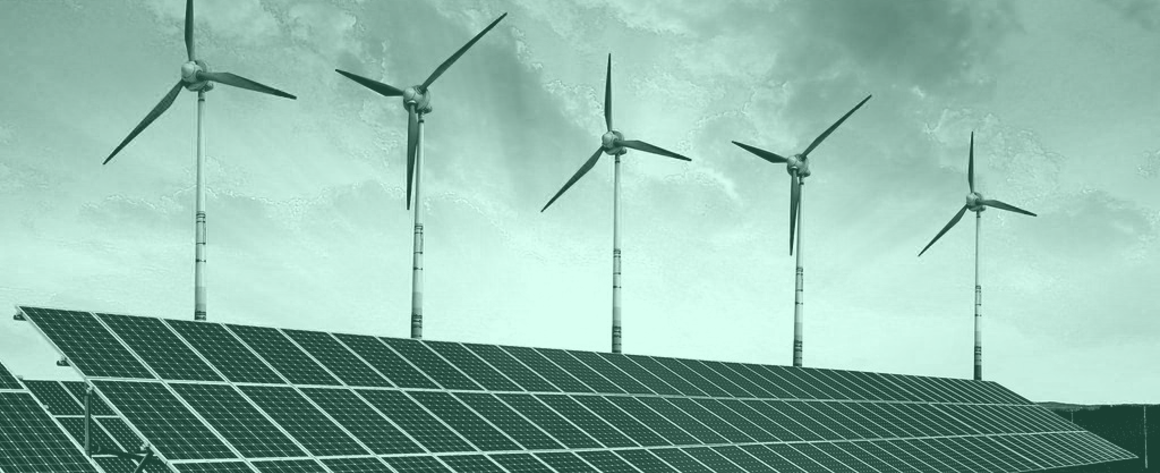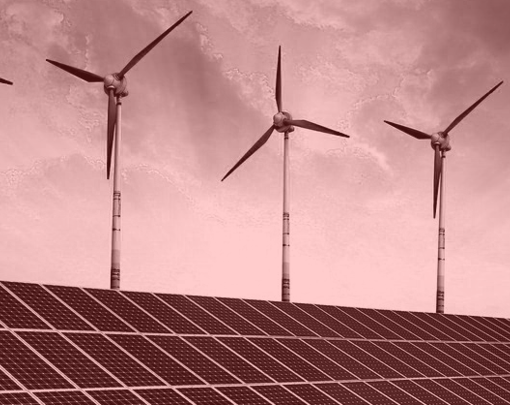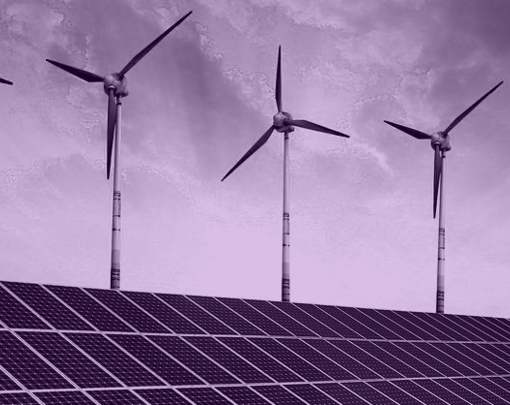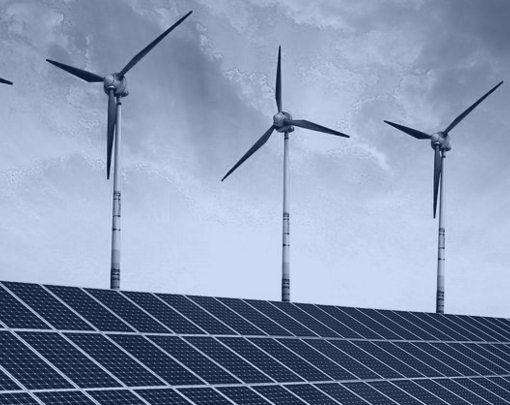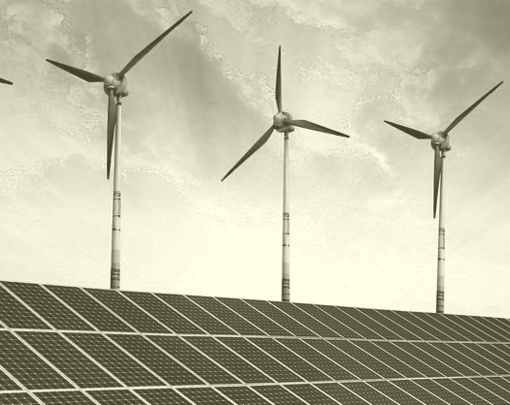Wall Street is financing climate destruction. Private banks’ business model values short-term, high-profit projects, even if that comes at the cost of the climate. When they do invest in the green transition, they generally focus their lending on large-scale projects designed by big companies, not community-based initiatives. The Green New Deal could shift financing flows to communities by creating a national green investment bank (GIB). In particular, a green investment bank could be instrumental in funding energy democracy projects by building an important federal program that directly funded community-based enterprises and low-income access to renewable energy and energy efficiency. This federal green investment bank could work alongside, and help to capitalize, a thriving cohort of regional and local banks to spur the transition across the United States and react to their local communities.
The problem
The Green New Deal calls for a transition towards a cleaner and more equitable energy system. This will take a massive system overhaul, which means we need access to major financing and investment. However, private banks, which make up much of the US financial system, have not shown they are up to the task of investing in the future we need. The Rainforest Action Network reported that 33 private banks provided a combined $1.9 trillion to fossil fuel projects since the adoption of the Paris Climate Accord in 2016.1 In direct contrast, those same banks only contributed around $230 billion to climate finance in 2016.2
The costs of the climate crisis—fueled and funded by private banks—have been disproportionately imposed upon workers, women, communities of color, and those most marginalized in society. In a Green New Deal, these are the communities that deserve to be able to build and own that new future. But even when Wall Street does invest in the energy transition, those funds usually go to large, high-credit corporations that often do little to distribute the benefits within the local community. This could further expand the gulf between the haves and the have-nots, and continue the historical pattern of redlining by private banks—from housing to student to business loans—in the emerging sector of climate finance. In instances when community-based or public projects have been able to secure loans from these banks, the steep interest (sometimes in the double digits) makes it a highly extractive experience.3
Right now, Wall Street is failing the climate with its focus on short-term profits and high returns, which favors dramatically higher investment levels in fossil fuels than our planet can support. Meanwhile, their climate solution investments are most likely to benefit the already-wealthy, rather than those most hit by the effects of climate change.
Answer: A green investment bank
The Green New Deal could create a federal green investment bank (GIB) chartered on inherently different motives from private lending: ensuring that financing is just, democratic, and decarbonized. As a publicly owned bank, the GIB would be more interested in keeping its capital consistent than maximizing profit, allowing it to refocus financial flows to public infrastructure investment and community-based needs.
There is more than enough evidence that public banks can be successful with low rates of return. For example, German investment banks earn less than a third of a percent return on assets (ROA) and the Nordic Investment Bank earns just over a half a percent ROA, while still operating effectively. Across the world, public banking has proven a key investor in the energy transition, already investing dramatically more than their private counterparts.4
This new GIB could deploy funds for the massive amount of work we need for a Green New Deal in a number of ways, including low- to no-interest loans, targeted grants, or direct ownership stakes in projects (building public-public or public-community collaborations). It could also operate as a connector between federal financing and local investments, liaising via a network of local public or community banks, or facilitate directed funds from third parties (official donors or green investors). As a national hub, the GIB could help capitalize new local public banks, as well as deploy federal financing at affordable rates to the local public banks, creating a system that builds across different scales while being able to place decision-making at local levels.5
The GIB would likely hit every sector of our economy—transit, water, housing, and so much more—so that we redesign our systems for living in a sustainable future. It could also be integral in opening up massive investment in energy democracy projects, for an energy transition that doesn’t redline low-income neighborhoods or communities of color. Such an Energy Democracy Financing Program could specifically focus on serving historically disinvested community members and supporting community or public ownership models through renewable or efficiency-based projects. The GIB and its local partner banks could target financing for renewable energy or efficiency projects that were either owned and/or benefited:
- Disinvested residents: People living in low-income census tracts, those enrolled in federal poverty assistance programs, renters who have largely been left out of energy ownership, or other indicators of disinvestment or displacement;
- Community enterprise: local enterprises that have historically been at a disadvantage including: women-owned or minority-owned businesses, cooperatives, social enterprises, or nonprofits such as churches or community centers;
- Public institutions: local government agencies, publicly- or cooperatively-owned utilities, and tribal governments.
The GIB would be fundamental in ensuring that we deploy nonextractive financing at the scale and speed we need for a Green New Deal. A core component of that bank’s vision should be to deploy resources to communities cut out of the renewable energy transition to date but have so much to gain.
Public banking in the US
For the US, public banking isn’t a foreign concept. The Reconstruction Finance Corporation (RFC), the first nationwide, federally owned investment bank, was formed in 1932 during the Great Depression and financed many of the New Deal initiatives. This federal bank stands as a clear historical example of the power of American public banks. Its original goal was to inject fresh liquidity into the banking sector, but it became a vital vehicle for the direct financing of many New Deal programs. It provided loans to a number of different sectors such as credit unions, railroads, farmers, and commercial businesses. The low returns on investments were used to offer more credit; by 1957, when the bank formally ended its operations, the bank had disbursed more than $40 billion in credit against its $500 million initial capitalization.
There is also a well-functioning state-level public bank that has operated effectively for the past 100 years: the Bank of North Dakota (BND). The state bank supports commerce and industry, while also partnering with local financial institutions to make business and education loans at better rates than its private counterparts. This has strengthened the ability of North Dakota’s community banks to compete against big, out-of-state banks, resulting in a strengthened North Dakota economy, particularly with regard to small business growth and job creation.6 Over the years, BND has sent about a third of a billion dollars into the state’s general fund, helping build schools, roads, and other important necessities for the state’s residents.7
This is part of a compilation of policy proposals for energy democracy in a Green New Deal assembled in conjunction with Cooperative Energy Futures and The Democracy Collaborative. It is largely based on a report by Thomas Marois and Ali Liza Gungen, A US green investment bank for all, which details the different components of a federal green investment bank.
- 1Alison Kirsch, et al., “Banking on climate change: Fossil fuel finance report card 2019,” Rainforest Action Network, March 19, 2019, https://www.ran.org/bankingonclimatechange2019/
- 2Padraig Oliver, Alex Clark, & Chavi Meattle, “Global climate finance: an updated view 2018,” Climate Policy Initiative, November 2018, https://climatepolicyinitiative.org/wp-content/uploads/2018/11/Global-Climate-Finance-_-An-Updated-View-2018.pdf
- 3Eillie Anzilotti, “The one strategy that could finance the whole Green New Deal,” FastCompany, June 26, 2019, https://www.fastcompany.com/90364616/public-banking-can-finance-the-green-new-deal
- 4Thomas Marois & Ali Riza Gungen, “A US green investment bank for all: democratized finance for a just transition,” The Next System Project, September 20, 2019, https://thenextsystem.org/green-investment-bank
- 5Laura Basu, “The Washington Consensus is dead. But what should replace it?” Open Democracy, April 13, 2019, https://www.opendemocracy.net/en/oureconomy/washington-consensus-dead-what-should-replace-it/
- 6Stacy Mitchell, “The Bank of North Dakota,” Institute for Local Self Reliance, accessed January 27, 2020, https://ilsr.org/rule/bank-of-north-dakota-2/
- 7Josh Harkinson, “How the nation’s only state-owned bank became the envy of Wall Street, March 28, 2009, https://www.motherjones.com/politics/2009/03/how-nations-only-state-owned-bank-became-envy-wall-street/
